
 |
| Map courtesy of www.theodora.com/maps, used with permission. Click it for a more detailed map of the tour routes. The trip to Galilee is marked in red, and the one to Jerusalem and Bethlehem in blue. |
 |
| Tel Megiddo, the buried ruins of one fortress after another built on top of the others. These fortresses guarded a main trade route through the Jezreel Valley. The Bible identifies this place as the site of the Battle of Armageddon. |
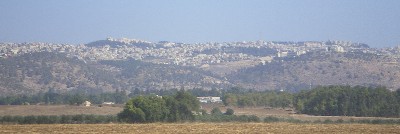 |
| Nazareth, overlooking the Jezreel Valley. |
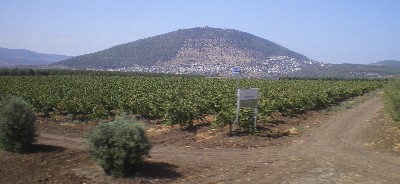 |
| Mt. Tabor. Bible prophecy says the desert will bloom, and indeed much of modern Israel is cultivated such as in this photograph. |
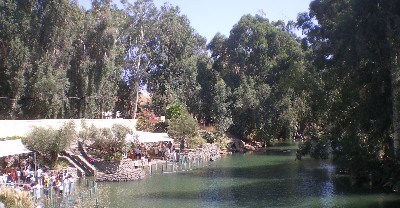 |
| Yardenit, the baptismal site on the Jordan River. Baptisms are taking place at lower left. |
|
|
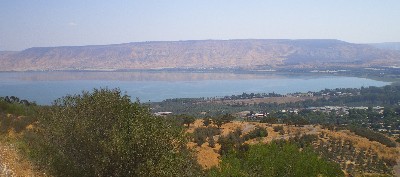 |
| Looking east, the Golan Heights are visible in the background. |
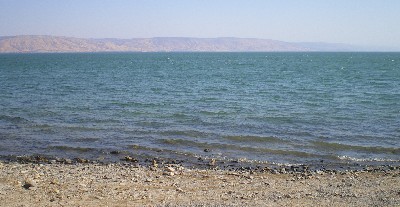 |
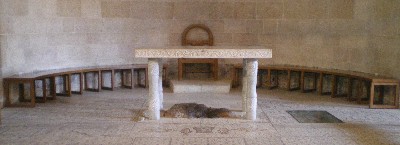 |
| Church of the Multiplication, commemorates the feedings of the multitudes. |
 |
| The lunch at Ein-Gev on the east shore of Galilee featured the local talipia, called St. Peter's Fish. |
 |
 |
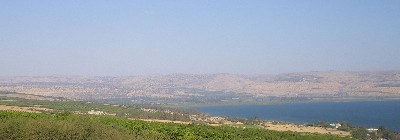 |
| Capernaum is located at the northern end of Galilee. |
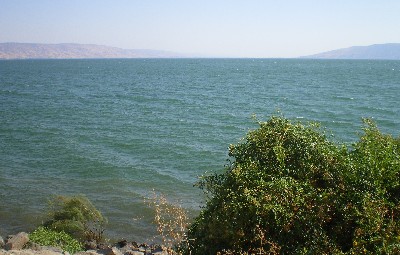 |
| The view of Galilee from Capernaum isn't much different than the way Jesus and the disciples saw it. |
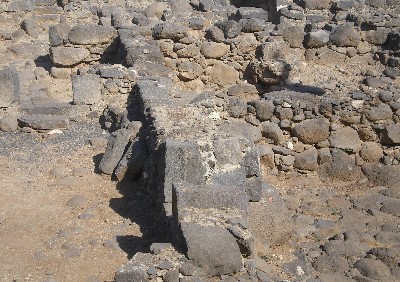 |
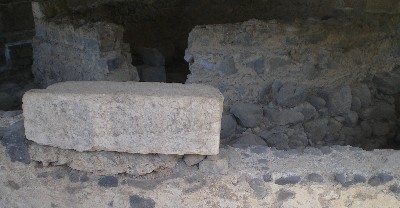 |
| There's good reason to believe this is Peter's house. |
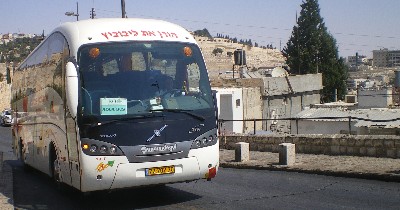 |
| The tour bus. |
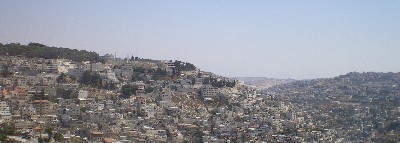 |
| Going to Jerusalem clarifies why the Bible refers to going "up" to Jerusalem. Getting there means going up, up, up. This is the hill country, as the Bible calls it. Being there adds meaning to the words of Isaiah 40:4 wonderfully put to music by George Frederic Handel, "Let every valley be lifted up, and every mountain and hill be made low; and let the rough ground become a plain, and the rugged terrain a broad valley;" |
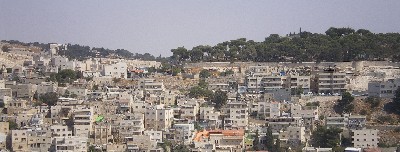 |
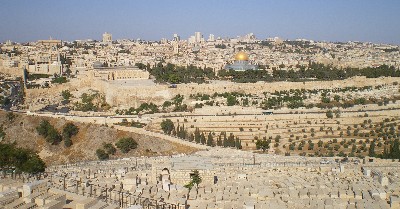 |
| The temple mount, viewed from the Mount of Olives. Note the myriad of tombs in the foreground of the photograph above. |
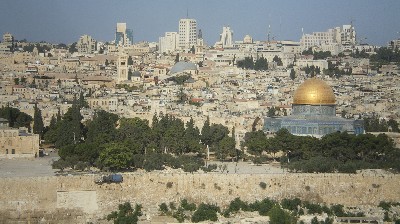 |
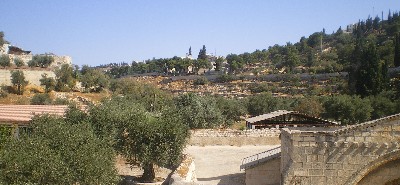 |
| The Kidron Valley between the temple mount and Mount of Olives, where the Garden of Gethsemane was located. |
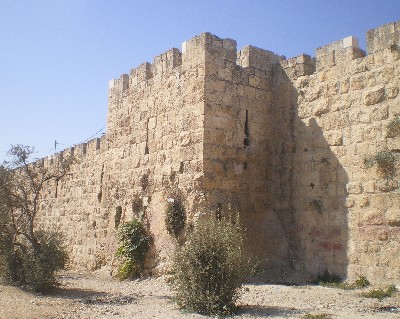 |
| The current wall of the old city of Jerusalem was built by the Turks in the 15th century. All previous walls had been demolished as Jerusalem was repeatedly destroyed throughout history. |
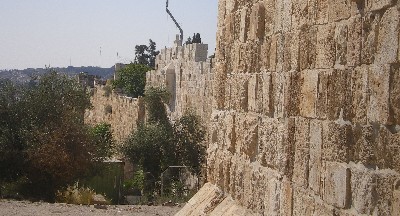 |
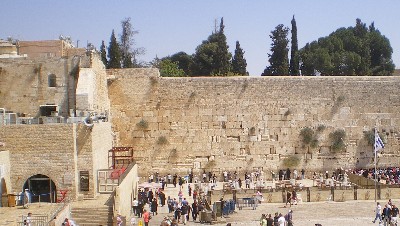 |
| The Western Wall, also called the Wailing Wall, remains from the time of Jesus. The background of this web page is a closeup photograph of the wall, stuffed with written prayers. |
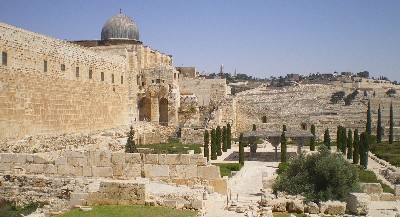 |
| The south side of the temple mount. |
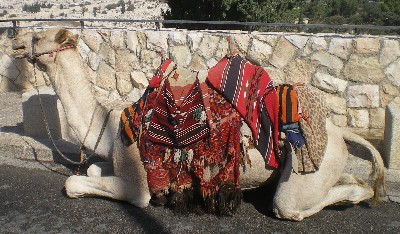 |
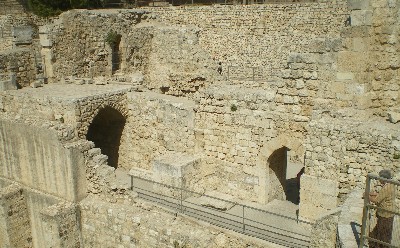 |
| Excavation of the Baths of Bethesda. |
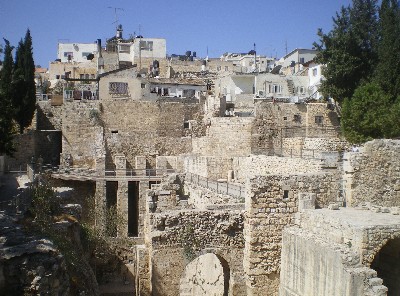 |
| This photograph demonstrates basic archeology. The ancient sites are buried beneath the modern city. Going deeper means going back further in time, here going down to four centuries before the Christ. |
 |
| The Via Dolorosa (i.e. Way of Sorrow) marks the Stations of the Cross, winding through narrow market streets. It's supposed to be the route Jesus carried the cross, but isn't really. My favorite place-name along the route is the Church of Our Lady of The Spasm. |
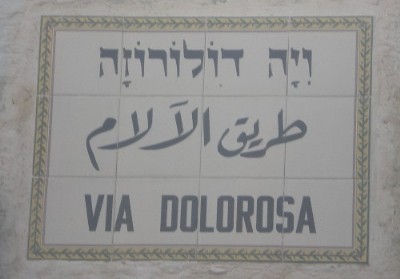 |
| A typical sign in Israel is written in three languages; Hebrew, Arabic, and English. |
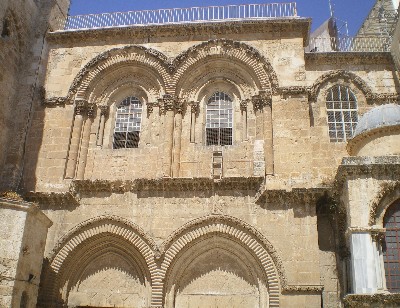 |
| There's good reason to believe this church marks the sites of the crucifixion and resurrection. Note the ladder at the right-hand window that hasn't been moved in the history of photography because the different denominations tending the church can't agree who has jurisdiction. |
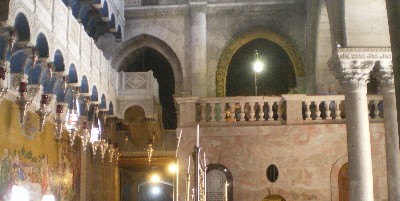 |
| Looking up at the site of the crucifixion. |
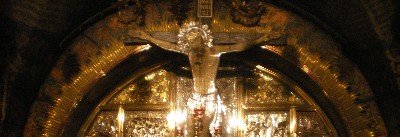 |
| This is it, the very spot where the Christ gave up His life as a ransom for many. |
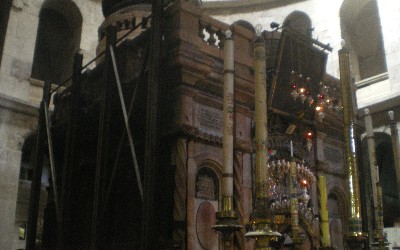 |
| The garden tomb has been dug away and part of it remains within this boxy structure, and is located incredibly close to Golgotha, less than the length of a football field away. |
 |
| Bethlehem is located within Palestinian territory, and the Israelis have surrounded it with a wall to protect themselves from terrorists. It reminded me of the Berlin Wall, which I visited in 1987 two years before its demise. |
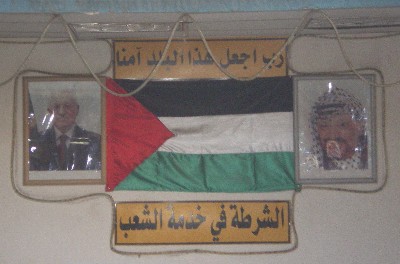 |
| At the Bethlehem police station. |
 |
| Everything's in Arabic in Bethlehem. |
 |
| The view from Bethlehem. |
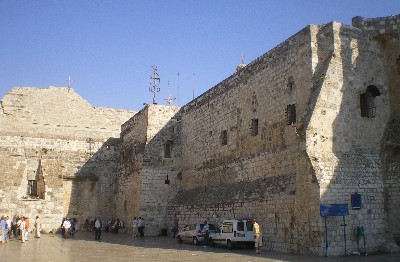 |
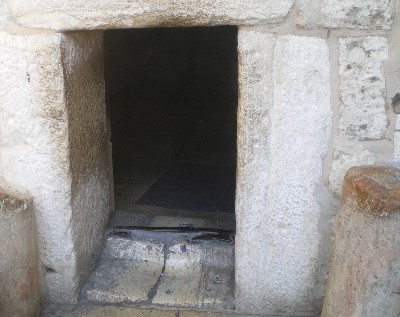 |
| The Crusaders walled in much of the opening to keep out horsemen, so visitors today must stoop to get inside. |
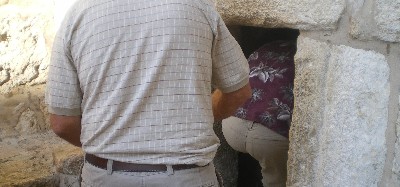 |
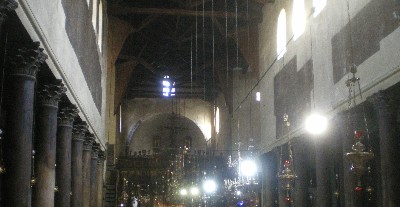 |
| Here marks a possible birthplace for the Christ. |
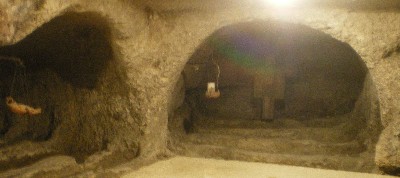 |
| The hills of Bethlehem are laced with caves, and it's likely Jesus was born in one of them. These can be seen below the Church of the Nativity. |
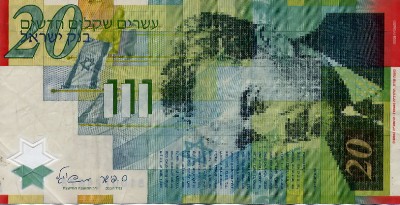 |
| 20 sheckels, worth about $7. |
 |
Select a flag for the photographs from that country.Flags courtesy of the World Flag Database by Graham Bartram (www.flags.net).
|